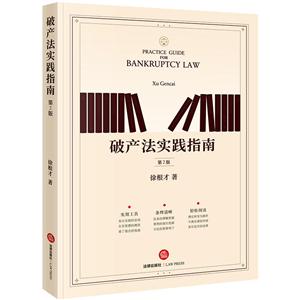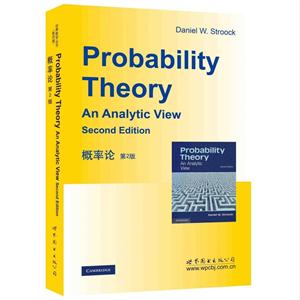
作者:(丹)阿斯姆森(SorenAsmuss
页数:602
出版社:世界图书出版公司
出版日期:2015
ISBN:9787510084492
电子书格式:pdf/epub/txt
内容简介
这是一部学习概率和应用概率推荐的书籍,将经典破坏概率和现代破坏概率巧妙结合,全面处理了应用概率的已知结果。考虑到涉及的专题有:Lundberg不等式;Cramer-Lundberg逼近;准确解;其他逼近;有限时间的破坏概率;经典复合Poisson模型等。在新的版本里做了大量扩充和更新,新的科目话题包括随机控制、Levy过程的起伏理论、Gerber Shiu函数和独立。
作者简介
是国际知名学者,在数学和物理学界享有盛誉。本书凝聚了作者多年科研和教学成果,适用于科研工作者、高校教师和研究生。
目录
Preface
Notation and conventions
I Introduction
1 The risk process
2 Claim size distributions
3 The arrival process
4 A summary of main results and methods
II Martingales and simple ruin calculations
1 Wald martingales
2 Gambler’s ruin. Two-sided ruin. Brownian motion
3 Further simple martingale calculations
4 More advanced martingales
III Further general tools and results
1 Likelihood ratios and change of measure
2 Duality with other applied probability models
3 Random walks in discrete or continuous time
4 Markov additive processes
5 The ladder height distribution
IV The compound Poisson model
1 Introduction
2 The Pollaczeck-Khinchine formula
3 Spe cases of the Pollaczeck-Khinchine formula
4 Change of measure via exponential families
5 Lundberg conjugation
6 Further topics related to the adjustment coefficient
7 Various approximations for the ruin probability
8 Comparing the risks of different claim size distributions
9 Sensitivity estimates
10 Estimation of the adjustment coefficient
V The probability of ruin within finite time
1 Exponential claims
2 The ruin probability with no initial reserve
3 Laplace transforms
4 When does ruin occur?
5 Diffusion approximations
6 Corrected diffusion approximations
7 How does ruin occur?
VI Renewal arrivals
1 Introduction
2 Exponential claims. The compound Poisson model with negative claims
3 Change of measure via exponential families
4 The duality with queueing theory
VII Risk theory in a Markovian environment
1 Model and examples
2 The ladder height distribution
3 Change of measure via exponential families
4 Comparisons with the compound Poisson model
5 The Markovian arrival process
6 Risk theory in a periodic environment
7 Dual queueing models
VIII Level-dependent risk processes
1 Introduction
2 The model with constant interest
3 The local adjustment coefficient. Logarithmic asymptotics
4 The model with tax
5 Discrete-time ruin problems with stochastic investment
6 Continuous-time ruin problems with stochastic investment
IX Matrix-analytic methods
1 Definition and basic properties of phase-type distributions
2 Renewal theory
3 The compound Poisson model
4 The renewal model
5 Markov-modulated input
6 Matrix-exponential distributions
7 Reserve-dependent premiums
8 Erlangization for the finite horizon case
X Ruin probabilities in the presence of heavy tails
1 Subexponential distributions
2 The compound Poisson model
3 The renewal model
4 Finite-horizon ruin probabilities
5 Reserve-dependent premiums
6 Tail estimation
XI Ruin probabilities for Levy processes
1 Preliminaries
2 One-sided ruin theory
3 The scale function and two-sided ruin problems
4 Further topics
5 The scale function for two-sided phase-type jumps
XII Gerber-Shiu functions
1 Introduction
2 The compound Poisson model
3 The renewal model
4 Levy risk models
XIII Further models with dependence
1 Large deviations
2 Heavy-tailed risk models with dependent input
3 Linear models
4 Risk processes with shot-noise Cox intensities
5 Causal dependency models
6 Dependent Sparre Andersen models
7 Gaussian models. Fractional Brownian motion
8 Ordering of ruin probabilities
9 Multi-dimensional risk processes
XIV Stochastic control
1 Introduction
2 Stochastic dynamic programming
3 The Hamilton-Jacobi-Bellman equation
XV Simulation methodology
1 Generalities
2 Simulation via the Pollaczeck-Khinchine formula…
3 Static importance sampling via Lundberg conjugation
4 Static importance sampling for the finite horizon case
5 Dynamic importance sampling
6 Regenerative simulation
7 Sensitivity analysis
XVI Miscellaneous topics
1 More on discrete-time risk models
2 The distribution of the aggregate claims
3 Principles for premium calculation
4 Reinsurance
Appendix
A1 Renewal theory
A2 Wiener-Hopf factorization
A3 Matrix-exponentials
A4 Some linear algebra
A5 Complements on phase-type distributions
A6 Tauberian theorems
Bibliography
Index
Notation and conventions
I Introduction
1 The risk process
2 Claim size distributions
3 The arrival process
4 A summary of main results and methods
II Martingales and simple ruin calculations
1 Wald martingales
2 Gambler’s ruin. Two-sided ruin. Brownian motion
3 Further simple martingale calculations
4 More advanced martingales
III Further general tools and results
1 Likelihood ratios and change of measure
2 Duality with other applied probability models
3 Random walks in discrete or continuous time
4 Markov additive processes
5 The ladder height distribution
IV The compound Poisson model
1 Introduction
2 The Pollaczeck-Khinchine formula
3 Spe cases of the Pollaczeck-Khinchine formula
4 Change of measure via exponential families
5 Lundberg conjugation
6 Further topics related to the adjustment coefficient
7 Various approximations for the ruin probability
8 Comparing the risks of different claim size distributions
9 Sensitivity estimates
10 Estimation of the adjustment coefficient
V The probability of ruin within finite time
1 Exponential claims
2 The ruin probability with no initial reserve
3 Laplace transforms
4 When does ruin occur?
5 Diffusion approximations
6 Corrected diffusion approximations
7 How does ruin occur?
VI Renewal arrivals
1 Introduction
2 Exponential claims. The compound Poisson model with negative claims
3 Change of measure via exponential families
4 The duality with queueing theory
VII Risk theory in a Markovian environment
1 Model and examples
2 The ladder height distribution
3 Change of measure via exponential families
4 Comparisons with the compound Poisson model
5 The Markovian arrival process
6 Risk theory in a periodic environment
7 Dual queueing models
VIII Level-dependent risk processes
1 Introduction
2 The model with constant interest
3 The local adjustment coefficient. Logarithmic asymptotics
4 The model with tax
5 Discrete-time ruin problems with stochastic investment
6 Continuous-time ruin problems with stochastic investment
IX Matrix-analytic methods
1 Definition and basic properties of phase-type distributions
2 Renewal theory
3 The compound Poisson model
4 The renewal model
5 Markov-modulated input
6 Matrix-exponential distributions
7 Reserve-dependent premiums
8 Erlangization for the finite horizon case
X Ruin probabilities in the presence of heavy tails
1 Subexponential distributions
2 The compound Poisson model
3 The renewal model
4 Finite-horizon ruin probabilities
5 Reserve-dependent premiums
6 Tail estimation
XI Ruin probabilities for Levy processes
1 Preliminaries
2 One-sided ruin theory
3 The scale function and two-sided ruin problems
4 Further topics
5 The scale function for two-sided phase-type jumps
XII Gerber-Shiu functions
1 Introduction
2 The compound Poisson model
3 The renewal model
4 Levy risk models
XIII Further models with dependence
1 Large deviations
2 Heavy-tailed risk models with dependent input
3 Linear models
4 Risk processes with shot-noise Cox intensities
5 Causal dependency models
6 Dependent Sparre Andersen models
7 Gaussian models. Fractional Brownian motion
8 Ordering of ruin probabilities
9 Multi-dimensional risk processes
XIV Stochastic control
1 Introduction
2 Stochastic dynamic programming
3 The Hamilton-Jacobi-Bellman equation
XV Simulation methodology
1 Generalities
2 Simulation via the Pollaczeck-Khinchine formula…
3 Static importance sampling via Lundberg conjugation
4 Static importance sampling for the finite horizon case
5 Dynamic importance sampling
6 Regenerative simulation
7 Sensitivity analysis
XVI Miscellaneous topics
1 More on discrete-time risk models
2 The distribution of the aggregate claims
3 Principles for premium calculation
4 Reinsurance
Appendix
A1 Renewal theory
A2 Wiener-Hopf factorization
A3 Matrix-exponentials
A4 Some linear algebra
A5 Complements on phase-type distributions
A6 Tauberian theorems
Bibliography
Index














